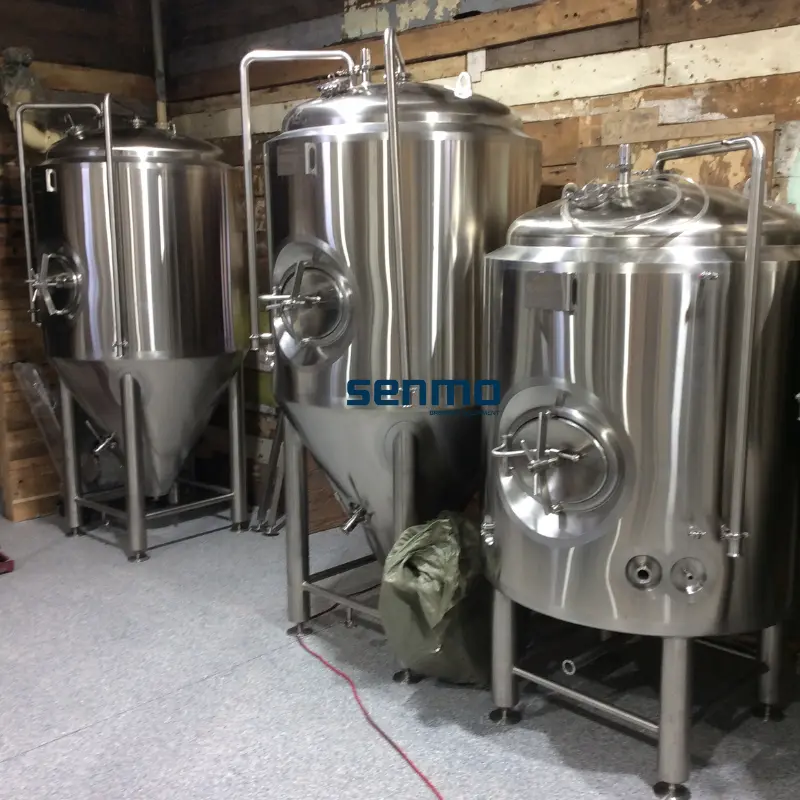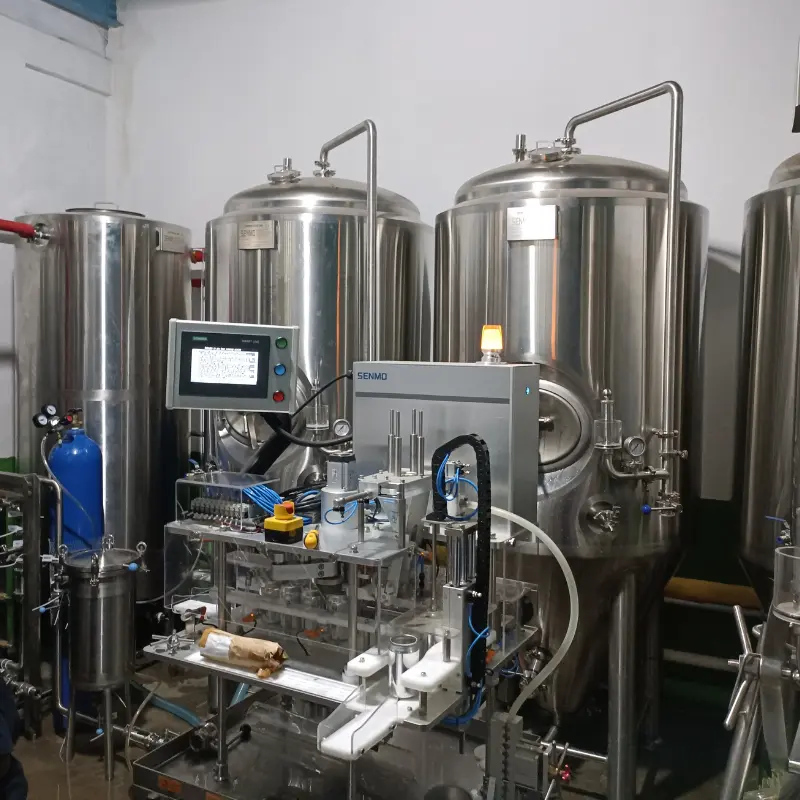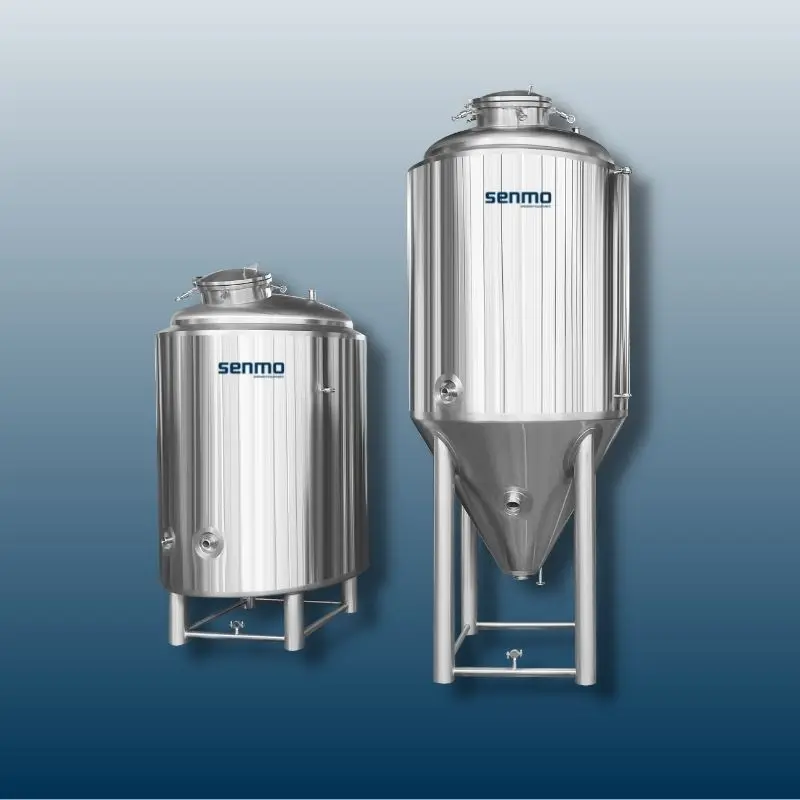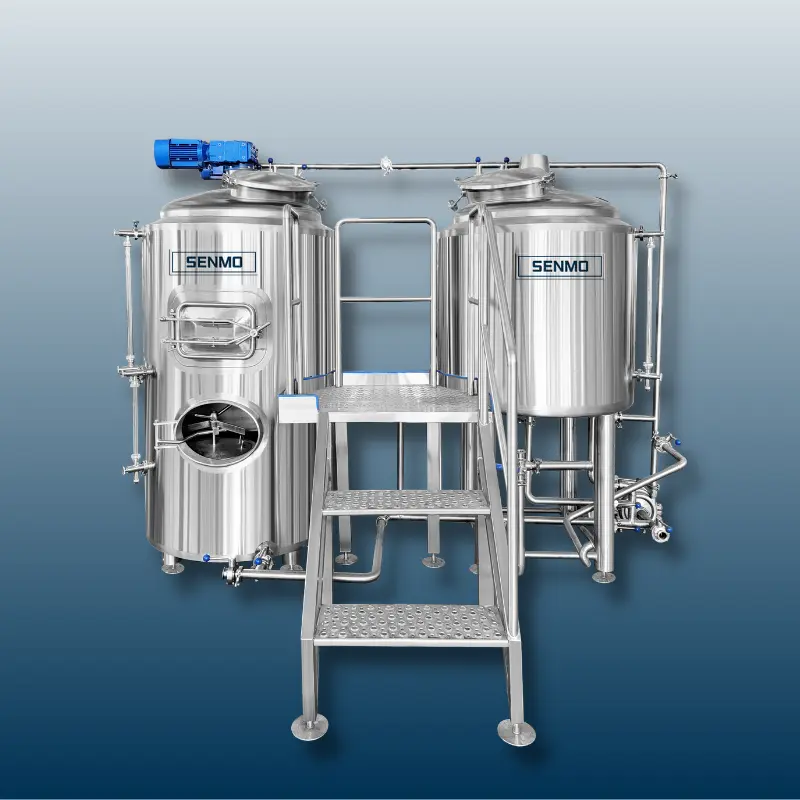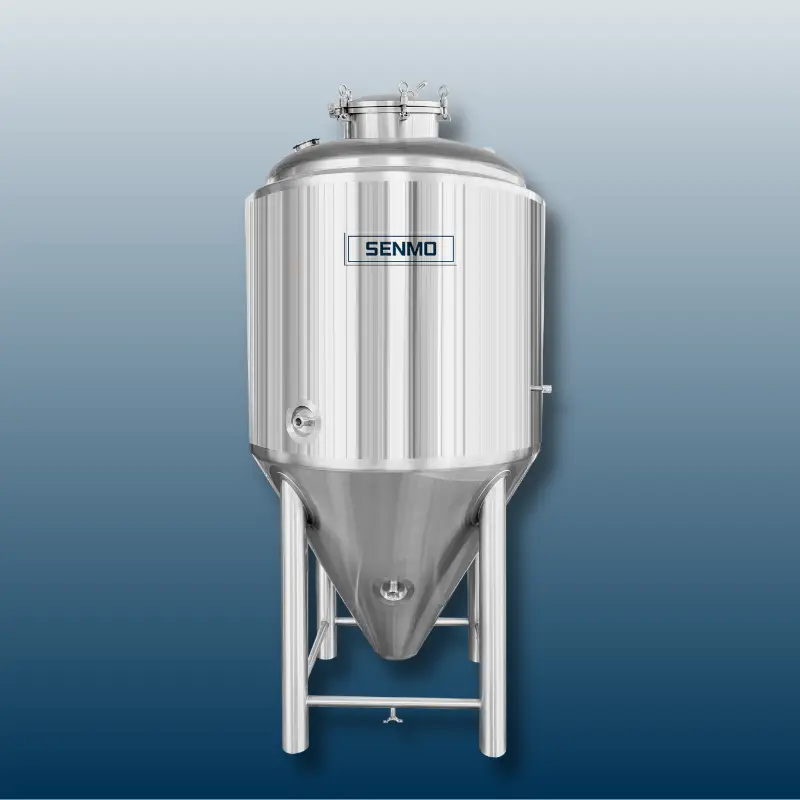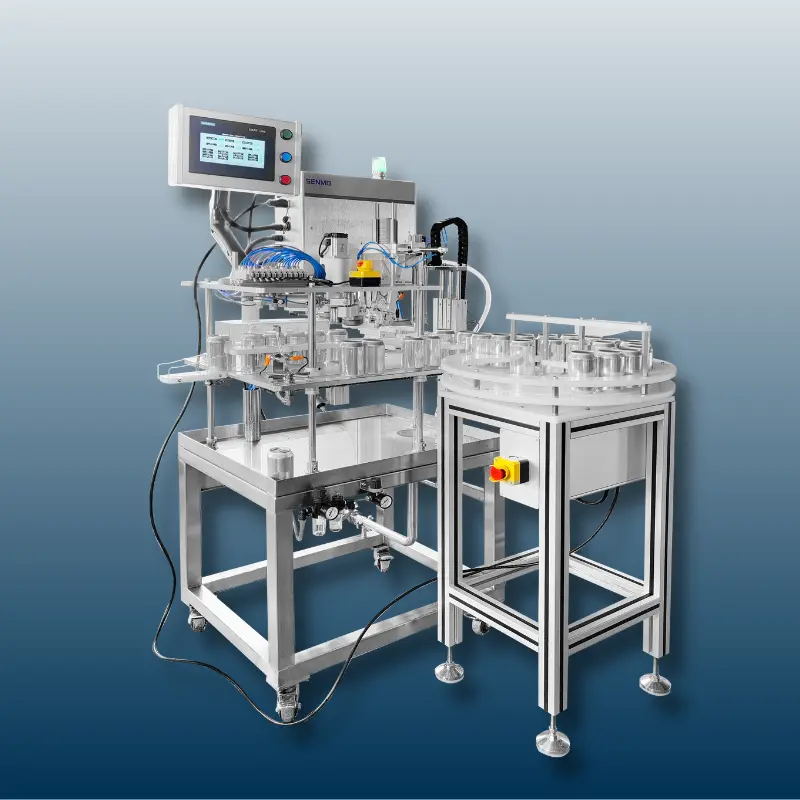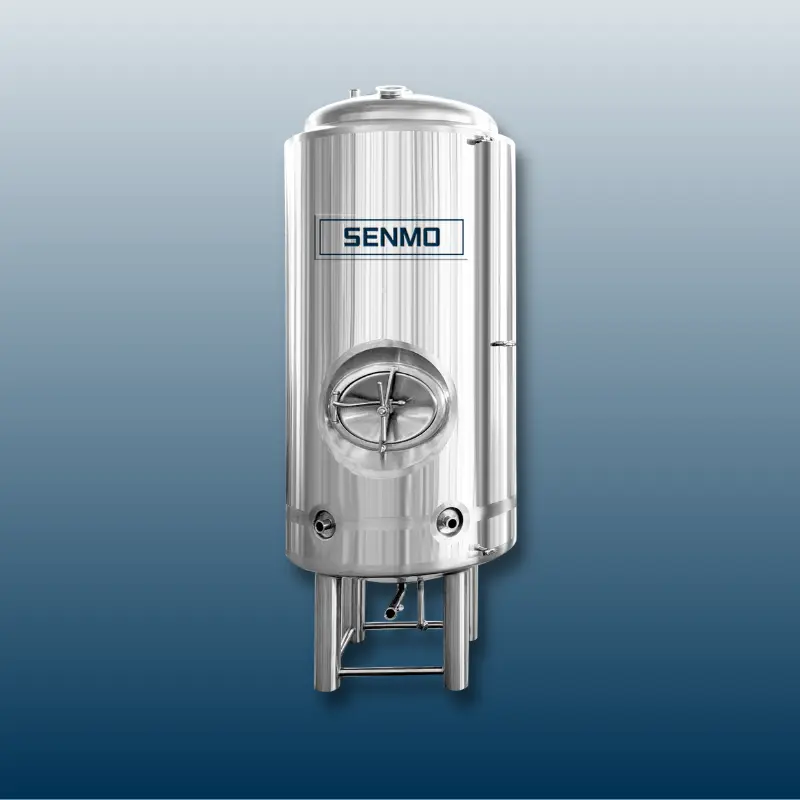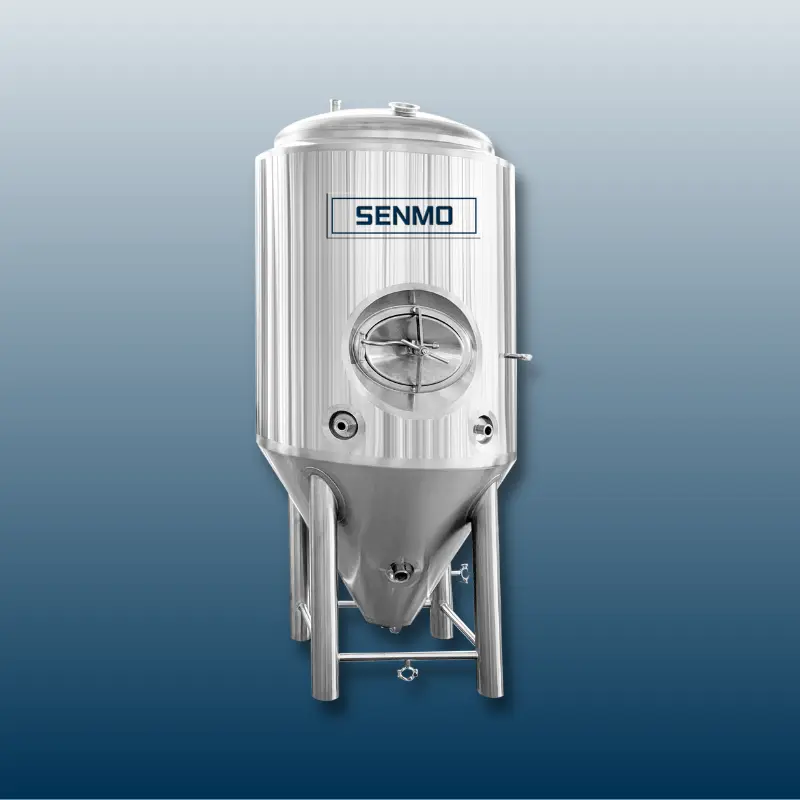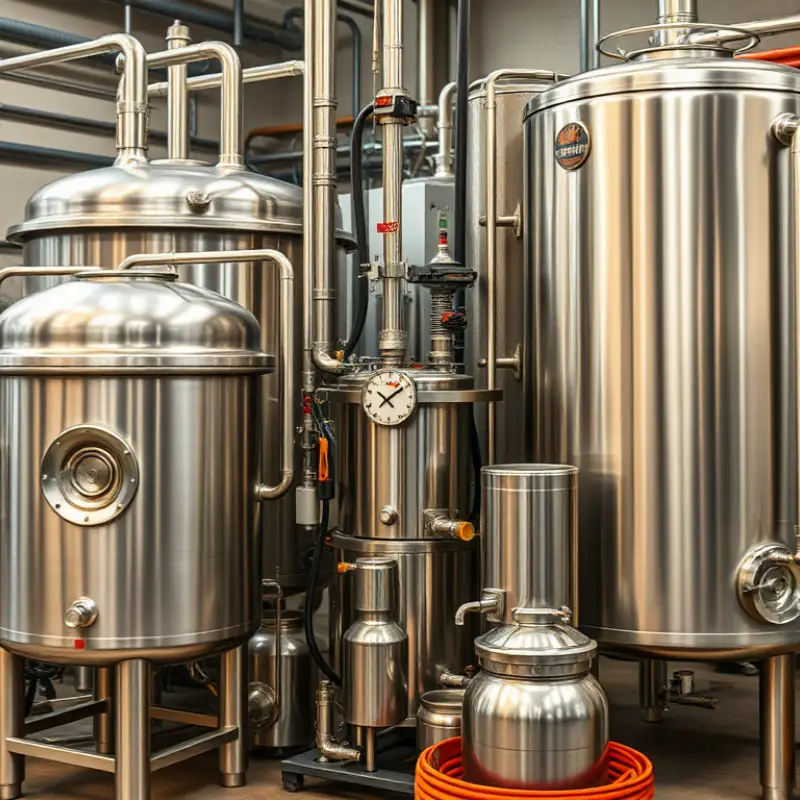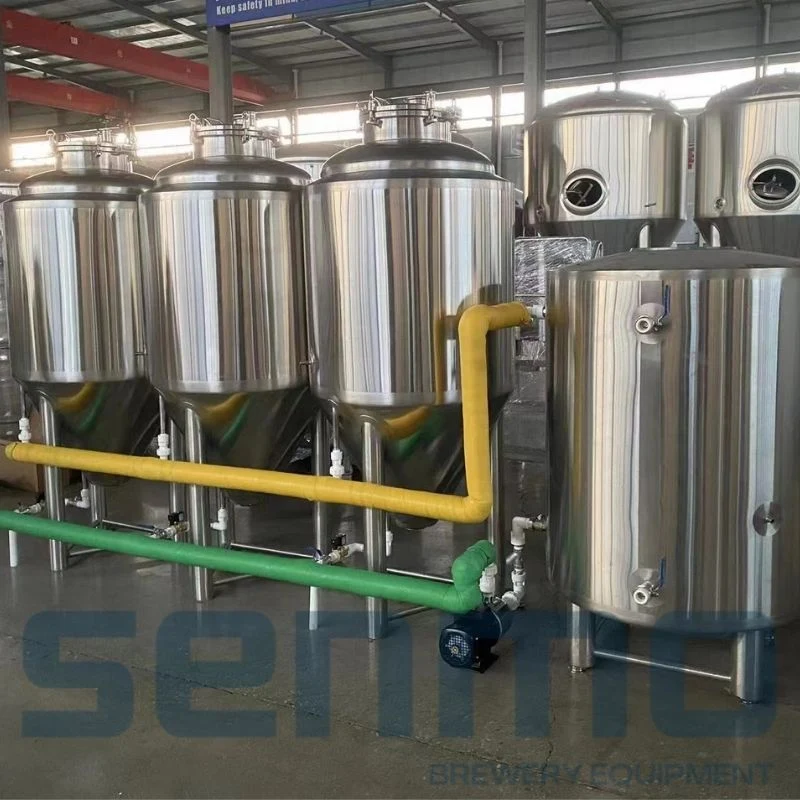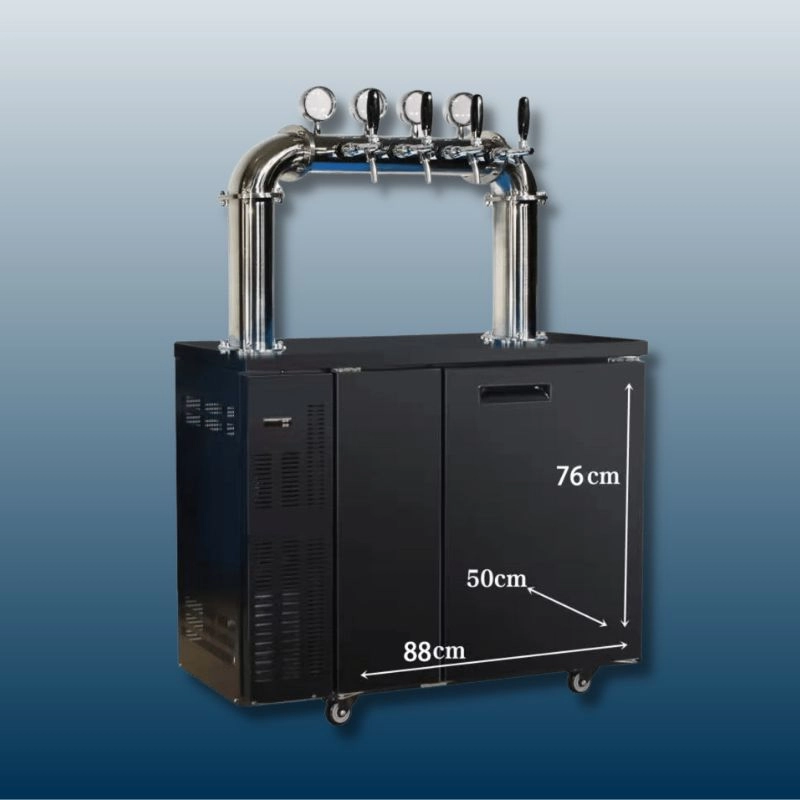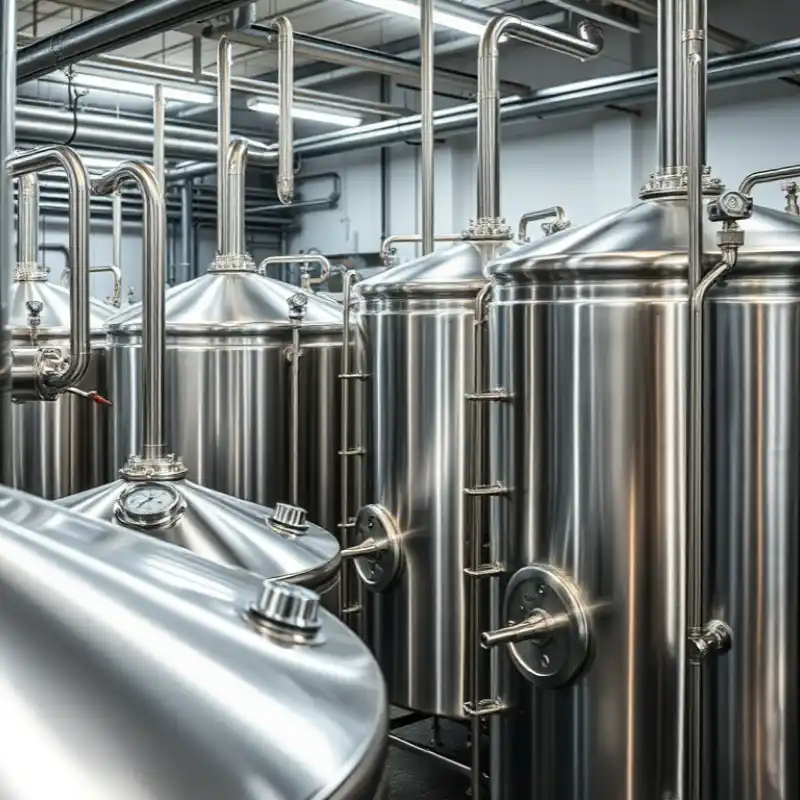What is 7 bbl brewhouse?
A 7 bbl brewhouse refers to a brewery setup with a production capacity of 7 beer barrels (bbl) per batch. In the brewing industry, a barrel of beer typically equals 31 U.S. gallons or approximately 117.35 liters.
The brewhouse is the central component of a brewery where the actual brewing process takes place. It consists of various vessels and equipment used in the brewing process, such as mash tuns, brew kettles, fermenters, and hot liquor tanks. The size of the brewhouse, indicated in barrels, refers to the maximum volume of beer that can be produced in a single batch.
A 7 bbl brewhouse is considered a mid-sized brewing system, suitable for craft breweries or microbreweries that produce beer on a relatively larger scale than smaller operations but are not as extensive as larger commercial breweries. This capacity allows for more significant production volumes compared to smaller brewhouses while still allowing brewers to maintain a level of craftsmanship and experimentation associated with smaller batches.
Specifications
A 7 bbl brewing system typically consists of several key components, each with specific functions and approximate volumes. Here are the main parts of a 7 bbl brewing system, their functions, and approximate volumes:
Milling System
Function: Used to crush malt into powder or granules, preparing for wort extraction.
Volume: Usually without a fixed volume, can vary based on requirements.
Mash Mixer / Mash Tun
Function: Mixes milled malt with hot water, maintains a specific temperature for mixing, hydrolysis, and saccharification processes to extract wort.
Volume: Approximately 7 barrels (each barrel 31 gallons / 117.35 liters), corresponding to the overall system capacity.
Lauter Tun
Function: Separates solid particles from wort, separating the clear liquid (known as sweet wort).
Volume: Similar to the mash tun, approximately 7 barrels.
Brew Kettle
Function: Boils the sweet wort, adds hops and other ingredients for bitterness, aroma, and antimicrobial properties, as well as wort concentration.
Volume: Approximately 7 barrels.
Hot Liquor Tank
Function: Stores and heats hot water used in the brewing process.
Volume: Around 7 barrels.
Fermenters
Function: Used to ferment wort into beer and control temperature and pressure during fermentation.
Volume: Typically 7 barrels or more to accommodate beer during fermentation.
Cooling Equipment
Function: Rapidly cools freshly boiled beer for further processing or fermentation.
Volume: Not necessarily a fixed volume but equipment used for quick cooling of wort.
Cleaning-in-Place System (CIP)
Function: Automatically cleans and sanitizes brewing equipment to ensure hygiene and quality.
Volume: No fixed volume, as it is an automated cleaning system.
The mentioned volumes are approximate and can vary based on the manufacturer, specific configuration, and customization requirements. A 7 bbl brewing system is typically suitable for small to medium-sized craft breweries and can be adjusted and customized according to production needs.
How to make?
To manufacture a 7 bbl brewhouse, a series of steps and planning are required. Here are the general steps to manufacture a 7 bbl brewing system:
Step 1: Design and Planning
Requirement Analysis: Determine the scale, functionalities, and specific requirements of the brewing system.
System Design: Create the initial design of the brewing system, including the layout and connections of all major components.
Develop a Plan: Establish a manufacturing plan, specifying required materials, tools, and timelines.
Step 2: Procurement of Materials and Equipment
Material Acquisition: Obtain the materials required for manufacturing the brewing system, such as stainless steel, copper, valves, piping, etc.
Equipment Procurement: Purchase necessary tools and equipment, including welding equipment, cutting tools, machining devices, etc.
Step 3: Manufacturing Major Components
Welding and Assembly: Fabricate various components of the brewing system, such as fermenters, brew kettles, mash tuns, etc.
Installation of Fittings: Install valves, sensors, piping connections, and other necessary fittings.
Step 4: System Integration and Testing
Assemble Brewing System: Integrate all manufactured components and ensure proper connections and installations.
System Testing: Conduct system tests to check the functionality and performance of each component, ensuring everything operates correctly.
Step 5: Installation and Debugging
Equipment Installation: Install the brewing system at the chosen production site.
System Debugging: Debug the system, perform initial operation tests, and ensure everything operates properly.
Step 6: Training and Commissioning
Operational Training: Train the operators on how to correctly operate and maintain the brewing system.
System Commissioning: Conduct the official system commissioning and commence production.
Notes and Recommendations:
Adherence to Standards: Ensure all manufacturing processes adhere to relevant safety and quality standards.
Collaboration and Communication: Maintain good communication and collaboration with the designers, manufacturers, and operational team of the brewing system.
Continuous Improvement: Continuously monitor and make adjustments post-startup to ensure the system's stable operation, and make necessary improvements and optimizations.Manufacturing a 7 bbl brewing system requires specialized knowledge and skills, so collaboration with professional brewing equipment manufacturers or engineers may be necessary, particularly when dealing with complex processes and high standards.
How to use?
Using a 7 bbl brewhouse involves several steps and processes to produce beer efficiently. Here's a general guide on how to operate a 7 bbl brewhouse:
1. Preparation and Malt Milling
Milling: Start by milling the malt to a suitable consistency using a mill. This process breaks down the malt to facilitate the extraction of fermentable sugars during mashing.
2. Mashing Process
Mash-in: Transfer the milled malt into the mash tun and mix it with hot water at specific temperatures. This process activates enzymes in the malt, converting starches into fermentable sugars.
Mashing: Allow the mixture to rest for a specific duration to complete the saccharification process.
Lautering: Transfer the mash to the lauter tun for separation. Extract the clear liquid (sweet wort) from the solid residues (spent grains).
3. Boiling and Hopping
Transfer to Brew Kettle: Move the sweet wort to the brew kettle and bring it to a boil.
Add Hops and Other Ingredients: Introduce hops and any additional ingredients according to the recipe, managing their timing and quantities for desired flavors and bitterness.
Boiling: Boil the wort for the required duration, usually around an hour, to extract flavors and sterilize the wort.
4. Cooling and Fermentation
Wort Cooling: Quickly cool the boiled wort to a temperature suitable for fermentation using a heat exchanger or cooling equipment.
Transfer to Fermenters: Move the cooled wort to fermentation vessels (fermenters) and pitch yeast to initiate fermentation.
Fermentation: Allow the yeast to ferment the wort into beer at controlled temperatures and monitor the process regularly.
5. Post-Fermentation Processing
Maturation: Once fermentation is complete, let the beer mature in the fermenters for a specified period to develop flavors.
Carbonation: Optionally carbonate the beer by injecting CO2 or allowing natural carbonation during conditioning.
Clarification: Clarify the beer by filtering or letting it settle to remove any remaining solids.
6. Packaging
Packaging: Transfer the finished beer into kegs, bottles, or cans, depending on your packaging preferences.
Storage: Store the packaged beer in appropriate conditions to maintain quality until distribution.
7. Cleaning and Maintenance
Cleaning: After each brewing cycle, thoroughly clean and sanitize all brewing equipment using a CIP (Cleaning-in-Place) system to ensure hygiene.
Maintenance: Regularly inspect and maintain the brewhouse equipment to prevent breakdowns and ensure efficient operation.
Notes:
Recipe Management: Follow specific recipes and procedures tailored to the desired beer style and flavors.
Quality Control: Implement quality checks at each stage to ensure consistency and quality of the beer produced.
Safety: Adhere to safety protocols and guidelines to prevent accidents during brewing operations.
Operating a 7 bbl brewhouse requires familiarity with the brewing process, attention to detail, and adherence to established brewing practices to produce high-quality beer consistently.




